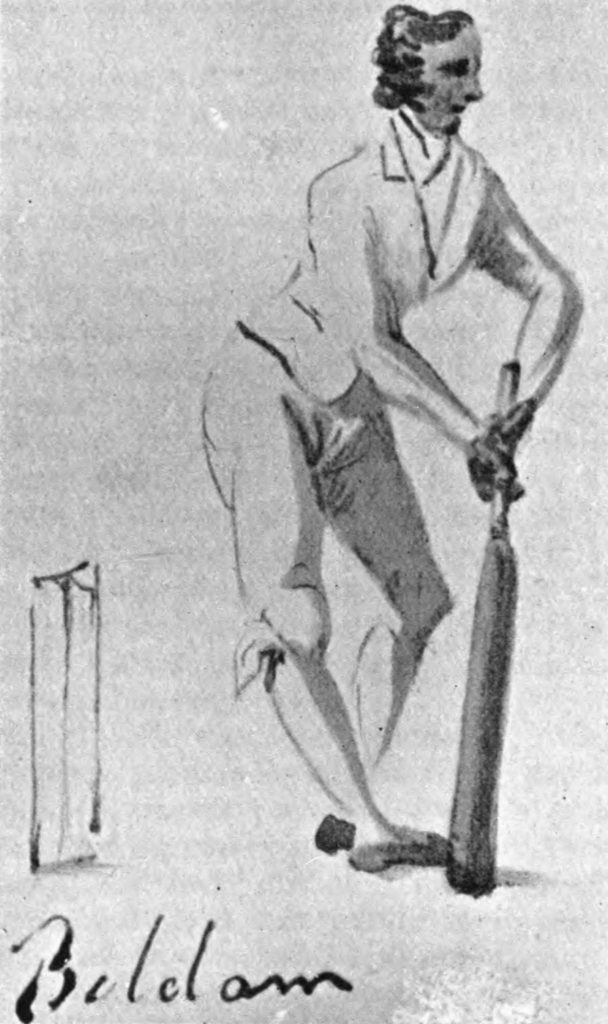
Unfortunately, an exhaustive search bore no fruit in the form of a good picture of Silver Billy in his heyday, only the loose portrait above. There is also photograph of him in craggy old age, still donning a beaver and a look of mischief about his eyes.

In 2000, Silver Billy was awarded the honor of being among the 100 top Cricket Players of all time. Named for his straw colored hair William was remarked, even at the advanced age of 86, as being in fine physical form. At 5’8″, he had a fair complexion and “handsome as well as intelligent features” (Nyron, Hambledon biographer) and was widely reported to have thirty nine children, although realistically he was said to only have about nine (one from his first wife and eight from his second).
A leading batsman during the Napoleanic Wars, he was known in the age of fixed matches as a fair player who refused bribes and insisted on fair play. In an age when the gentry made a fortune off bets, Beldham still made good money compared to labourers and artisans at six guineas for every win and four for a loss.
Beldham held the distinguished honor of playing for both Gentlemen v Players during the first two years of the match, continuing to play until ripe old age. Although most noted for his batsmanship (“safer than the Bank”), he was reportedly an all-rounder and solid player.
Beldham eventually retired to Tilford where he had purchased a pub, The Barley Mow, and spent his time raising children and visiting local matches.
As one of the first super stars of sport, his professional athleticism was second only to his integrity at not selling out the game.












While there is no formal picture or portrait of Billy in his prime, there is a sketch made from life at Lord’s circa 1795:
http://www.facebook.com/home.php?ref=home#!/photo.php?pid=12372747&id=854765509
This, and the photograph, are the only two known images of Beldham made in his lifetime.